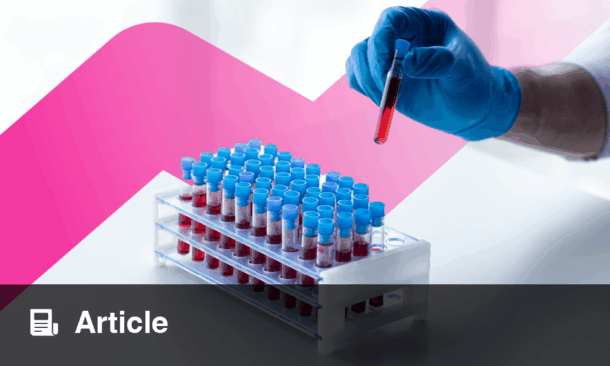Dirk Schnappinger | Professor of Microbiology and Immunology, Weill Cornell Medical College, New York City, USA
Citation: EMJ Microbiol Infect Dis. 2025;6[1]:62-64. https://doi.org/10.33590/emjmicrobiolinfectdis/UCPZ4294
![]()
Your lab has developed various genetic methods to turn Mycobacterium tuberculosis (Mtb) genes on and off. How are these tools refining our understanding of tuberculosis (TB) pathogenesis?
The areas that benefit from these tools include: (i) studies of in vitro essential genes, (ii) the identification of genes Mtb requires to persist during infection, and (iii) the mechanistic analyses of antitubercular small molecules.
For example, conditional gene silencing tools allow us to study the consequences of inactivating in vitro essential gene functions using conditional knockdown mutants. Such mutants also allow us to determine the impact of inactivating an Mtb gene during a chronic infection. Exposing genome-wide pools of conditional knockdown mutants to antitubercular molecules helps to develop hypotheses on how these compounds affect Mtb, as it identifies mutants that increase or decrease Mtb’s susceptibility to these compounds.
Given the alarming rise of drug-resistant and extensively drug resistant (XDR) TB, how is your research helping in designing shorter, more effective TB treatments?
My lab is part of the TB Drug Accelerator (TBDA),1 a consortium supported by the Gates Foundation that brings together scientists with different areas of expertise to develop new drugs and drug regimens. Our contribution focuses on two areas. One is the identification of targets for which partial inactivation is sufficient to kill Mtb in vitro and during infections. Such targets are then prioritised for the development of new drug candidates. The second is defining the mechanism(s) of action by which small molecules that are pursued for the development of new TB drugs prevent Mtb from growing.
More recently, we helped to establish the National Institutes of Health (NIH) funded Preclinical Design and Clinical Translation of TB Regimens (PReDiCTR) consortium (led by Rada Savic, University of California, San Francisco, USA), in which we apply our genomic approaches to understand why some multidrug TB treatment regimens failed in the clinic and why others succeeded. Understanding the parameters that determine clinical success of multidrug regimens should help us design faster-acting TB drug regimens in the future.
Cofactor metabolism is one of your current research focuses. Could you explain how targeting metabolic pathways in Mtb might contribute to the development of novel therapeutics?
The pathology of TB is complex. The pathogen grows and persists in various heterogeneous lesions, some of which are hypoxic, some of which are not. Mtb’s metabolic adaptability is key to its survival in these distinct environments, and thus is a vulnerability of the pathogen that could be exploited therapeutically.
Targeting cofactors has the additional advantage of interfering with multiple metabolic pathways. For example, hundreds of enzymes participating in different pathways require nicotinamide adenine dinucleotide as a cofactor. Depriving Mtb of nicotinamide adenine dinucleotide would thus affect the pathogen in multiple ways.
Your work spans both fundamental microbiology and translational research. What challenges do you face in bridging the gap between basic gene function studies and actual drug development?
Success in drug development depends on integrating various scientific disciplines, including chemistry, biology, pharmacology, and toxicology. Therefore, there is no academic lab that can realistically pursue drug development on its own. Collaboration is key. Realising this is easy, but implementing it is challenging. The grants we typically apply for cannot provide the funds needed to support a multidisciplinary team of experienced scientists.
Another complication is that academic careers depend on first authorships (for graduate students and postdoctoral fellows) and last authorships (for faculty). Devoting substantial effort to team sciencecan thus be counterproductive for graduate students, postdoctoral fellows, and junior faculty.
Please explain key findings from your recent paper, ‘Engineered Mycobacterium tuberculosis triple-kill-switch strain provides controlled tuberculosis infection in animal models’. What are the implications of your findings for establishing effective TB human challenge models?
This paper is a good example of a tremendous team effort, with key contributions from two labs at Weill Cornell Medical College, New York, USA (led by Sabine Ehrt and me) and two labs at Harvard University, Cambridge, Massachusetts, USA (led by Sarah Fortune and Eric Rubin). The main goal was to construct a conditionally replicating Mtb strain that would be safe enough to serve as the challenge strain in a human challenge model. The Mtb strain we developed requires two supplements to grow. Without these supplements, the strain dies. Such conditionally replicating Mtb strains had been constructed before, but the frequency with which so-called escape mutants (which can grow without the supplements) appeared was too high to contemplate their use in humans. For the strain we constructed, the frequency of escape mutants is more than 1,000-fold lower than for any of the previously constructed mutants.
There is still a lot of work to be done before the strain can be used in humans, but to me this is a tremendously exciting project that could have a profound impact on TB vaccine development. One reason is that a human challenge model could dramatically reduce the cost of testing vaccine candidates in humans. The Phase III trial for the M72 vaccine is estimated to cost 550 million USD. If it takes 550 million USD to test one vaccine, then we cannot test many of them. A human challenge model might reduce these costs to those of a Phase I clinical trial, which typically costs less than 10 million USD. That would be a game changer, allowing us to test more vaccine candidates than it is currently possible to test. A human challenge model would also provide ample opportunities to study the immune response to Mtb in humans in ways that are currently not possible.
Looking ahead, what are the most promising strategies or technologies that you believe will reshape the future of TB therapy and vaccine development
In mycobacterial genetics, the Clustered Regularly Interspaced Short Palindromic Repeats interference (CRISPRi) system has been transformative, and the impact of this technology will continue to grow. In drug development, there are several technologies that could have a major impact: improved DNA encoded libraries, which allow us to efficiently screen millions of small molecules for new chemical starting points for drug development; proteolysis-targeting chimeras, which inactivate a targeted protein by degradation; and long-acting injectables, which could reduce treatment failures due to nonadherence. I am also enthusiastic about utilising more natural products for TB drug development than we have been able to so far. AI is likely to transform several aspects of drug development, with the definition of design rules for small molecules that efficiently penetrate the mycobacterial cell envelope being one possible example. An important strategy change will be to integrate considerations of regimen design into earlier steps of drug development. For vaccine development, I believe that a human challenge model would have a tremendous impact.
Finally, it seems worth repeating how much translational research depends on integrating different areas of expertise. When I started to do work that I hoped would facilitate TB drug development, I was quite naïve about what it takes to develop a drug. Since then, I have learned a lot from my colleagues in chemistry and pharmacology. This was only possible via regular face-to-face interactions which, in my case, primarily occurred through my participation in the TBDA. It’s important to continue to reduce the barriers for the multidisciplinary efforts that are required for success in translational research.








